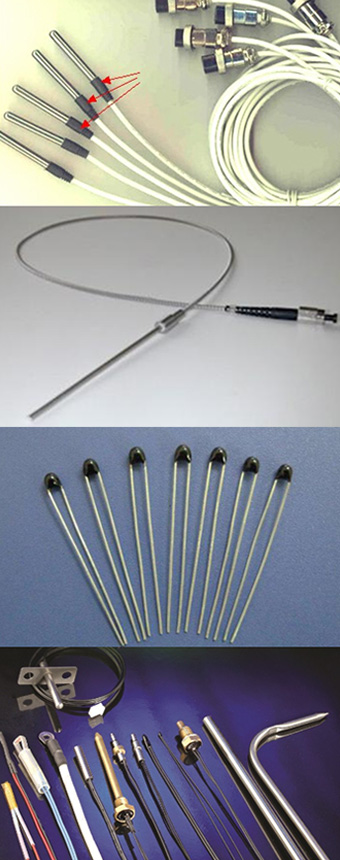Temperature sensor bonding, sealant solutions
Temperature sensor refers to a sensor that can sense temperature and convert it into a usable output signal. Temperature sensor is the core part of temperature measuring instrument, and there are many varieties.
According to the measurement method can be divided into contact and non-contact two categories, according to the characteristics of the sensor material and electronic components are divided into thermocouples and thermal resistance (PTC (positive temperature coefficient) and NTC (negative temperature coefficient)) two categories. These two temperature sensors respectively use the potential difference and resistance of metal materials with temperature changes to measure the temperature, will use two different conductor materials or thermal resistance (commonly platinum resistance), and metal bushing fixed metal harness, with high temperature glue potting for sealing protection. In addition to high temperature resistance, the insulation characteristics of the glue are also very important, otherwise the electrical insulation performance will decline at high temperatures, which will seriously interfere with the work of the sensor.
The application of glue on the temperature sensor mainly plays the role of bonding and fixing, sealing protection and heat conduction.
According to the common types of glue materials for temperature sensor applications, they can be divided into:
Polyurethane glue: the working temperature is generally -40-125℃, the glue hardness range is wide, and the low temperature resistance is excellent.
Silicone glue: the working temperature is generally -50-200℃, low stress, elastic, high temperature resistance.
Epoxy glue: the working temperature is generally about -40-180 ° C, high bond strength, strong resistance to media.
Inorganic glue: The working temperature can reach more than 1000℃.
We can provide different types of temperature sensor glue recommendations according to different application scenarios.


